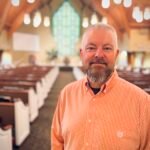To be sure, there is a difference between reading and studying the Bible. Nevertheless, the first step in good Bible study is to read a book. If you are preaching a sermon, teaching a class, or studying the scriptures for your application, it is vital to understand your passage in the context of the book. What you teach, preach, or study must fit into the overall message of the book or letter in which that passage is found. It is essential to begin by reading that book or letter entirely (multiple times, preferably).
As I have taught others how to preach, teach, and study the Bible, I typically get as much kickback from this point as any other. “I just do not have time to read an entire book during the week before I teach.” It is easy for you to say. You preachers are the only ones who have time to read books of the Bible like that.” One of the ministry’s blessings is more time to study the Bible. However, I want to use this article to challenge the thinking that you do not have time to “Binge Read The Bible.”
First, let’s talk about the speed of reading. It is true that Americans just do not read as often or as well as we used to read. Still, Hasbrouck & Tindal’s 2017 Oral Reading Fluency Norms and Marc Brysbaert’s review and meta-analysis of reading rate from 2019 indicate someone in middle school should read 150-204 words per minute (WPM). High school students should read 200-300 WPM, college students 300-350 WPM, and adults 220-350 WPM. For this article, we will use the low end of that spectrum. If you read at a middle school level, your average reading speed would be at least 150 WPM.
Second, let’s talk about the length of the reading. Jeffery Kranz used Logos Bible Software to make a count of words for each book of the Bible. It is based on the original languages, so your particular English translation may vary slightly, but it should not be off too far. According to his stats, here are the five longest and shortest books in both the Old and New Testaments, as well as how long it should take to read them based on our 150 WPM rate.
There you go, somewhere between about a minute and a half and under four hours. Most adults can probably read much faster than 150 words per minute. Still, is even this doable? After all, one might still claim not to have four hours to devote to reading a book. That brings us to the last point.
Third, let’s look at how much time we have. Of course, we have 24 hours each day. According to the American Time Use Survey, we spend two hours and 48 minutes daily watching television. We spend 38 minutes a day socializing and one hour and 42 minutes on sports and exercise. Daily we devote one hour and eleven minutes to eating and 46 minutes to shopping. The total is about seven hours, five minutes we could potentially “steal away,” some of which to read one, two, or even three hours a day. One study found that Americans who were 15 years old and up had, on average, 4.5 hours a day of completely free time! Imagine if we only used half of that towards Bible reading! Another study found that 60-70% of Americans have binge-watched a series for 1-3 hours or more in one sitting. Forbes reports Americans spend almost an hour a day on Social Media.
This has been a longer article than usual, in part because of the statistics. I write in such length and with such stats to prove that we have time to “Binge Read” the Bible! Again, this is the first step in good Bible study, thorough exegesis, and proper teaching and preaching. We must make time to read the Bible and read Bible books and letters in one sitting. Start with some small ones and work up to the longer ones. As you do, note the themes that run through a text and how your pericope fits into the larger message of its book or letter. “Binge Read the Bible!”

______________________________
1 https://www.brtprojects.org/wp-content/uploads/2017/10/TechRpt_1702ORFNorms_Fini.pdf
3 https://overviewbible.com/word-counts-books-of-bible/
4 https://www.bls.gov/news.release/atus.nr0.htm
5 https://www.rand.org/news/press/2019/10/28.html
6 https://www.statista.com/statistics/1081349/binge-watching-tv-by-gender-worldwide/
Corey Sawyers
Corey Sawyers is the preaching minister at the Martin (TN) Church of Christ and an adjunct instructor with Bear Valley Bible Institute. He began preaching at the age of 15, filling in throughout Northwest Tennessee. He has been in full-time ministry since 1998 and has served with congregations in Tennessee and Colorado. He and his wife, Melody, married in 1996, and both are graduates of Bear Valley Bible Institute. They have three sons. Garrett is the youth minister at the Greenfield (TN) Church of Christ and is soon to be married to Bailey Jones. Gordon is the preacher for the Knob Creek Church of Christ in Dukedom, TN, and is soon to be married to Lauren Kelly. Gannon is still at home and wants to go into ministry when he grows up. Corey loves his family, ministry, the Tennessee Vols, the Andy Griffith Show, drinking coffee, and banana pudding.






